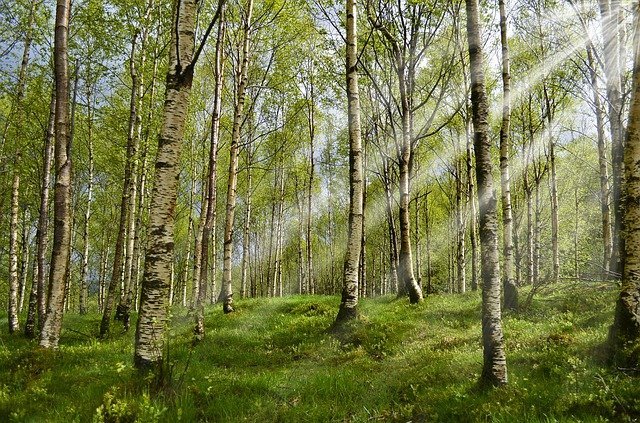
Birch is known for its diuretic and depurative properties that make it a natural remedy against cellulite of urinary tract disorders. Let’s find out more.
Birch (Betula alba) is a perennial plant of the Betulaceae family, used for its diuretic and depurative properties useful in the treatment of cellulite of urinary tract disorders.
What is birch used for
Birch and products obtained from this plant have several applications. In fact, birch leaves, bark and sap with different properties are used.
To sum up, birch serves to counteract:
- Water retention and cellulite
- oedema
- hypertension
- inflammation of the urinary tract
- excessive sweating
- skin diseases
- muscle pain
- hair loss
- meteorism
- hypercholesterolemia
Properties of birch
Birch has diuretic and depurative properties. In herbal medicine, the leaves are mainly used, rich in flavonoids, phenolic acids, essential oil and ascorbic acid.
In addition to the birch leaf, the bark and sap are also used for therapeutic purposes. Birch bark has pain-relieving and soothing properties while birch sap has diuretic and cholesterol-lowering action.
The scientific name of birch is Betula alba, commonly called white birch. The same species, however, is also indicated by other names: Betula pendula and Betula verrucosa. Another less widespread species is instead the Betula pubescens or hairy birch.
Benefits of birch
Birch leaves are used in phytotherapy for diuretic and depurative properties, conferred by:
- Flavonoids;
- sesquitepene oxides;
- tannins (leukoanthocyanidins);
- vitamin C;
- betulinic, chlorogenic and caffeic acid;
- resins;
- essential oils.
The purifying action is assisted by the diuretic one. The increase in urine emission facilitates the elimination of water and excess substances, accumulated in the body, such as cholesterol and uric acids that cause rheumatism and gout.
For this reason birch is used in the treatment of hypertension and water retention. The diuretic effect also acts in a preventive manner with respect to the formation of renella and becomes a sort of antiseptic “washing” in urinary tract diseases, such as cystitis.
The plant is also one of the elective remedies in the treatment of cellulite since, despite not having slimming properties, it helps to reduce water retention, inflammation and the formation of fibroconnective nodules characteristic of this skin imperfection.
Birch sap, also known as Betula verrucosa lymph, from which the bud derivative is extracted, contains two heterosides capable of enzymatically releasing methyl salicylate with analgesic and anti-inflammatory activity. However, birch sap, like its leaves, also finds its greatest application in the treatment of cellulite.
The sap is collected following a particular technique: at the beginning of March, some holes are drilled in adult birches about one meter from the ground, two to five centimeters deep, slightly oblique upwards, in which a tube is introduced from which the sap flows into the containers placed on the ground. A trunk of 50 cm in diameter provides in 4 days an average of 3-4 liters of sap.
By distillation of the bark, birch tar is obtained, used in skin diseases. The birch oil contained in the tar is instead used in ointments for muscle pain.
Uses of birch
Of the birch can be used the leaves in infusion, the juice of the plant, the sap, the decoction obtained from the bark.
The infusion, juice and sap are used internally for purifying and diuretic properties. The infusion can also be used externally to combat hair loss. The decoction of the bark, always for topical use, is used to make foot baths against excessive sweating of the feet.
On the market you can also find birch extracts in tablets, capsules and drops, as well as the mother tincture.
How to use
Infusion
Birch herbal tea is prepared with a cucchaio of dried leaves for each cup of water infused for ten minutes. You can consume several cups a day.
Birch mother tincture
40 drops of birch mother tincture in a little water, one to three times a day.
Birch juice
45 ml diluted in a liter of drinking waterlater in the day.
Birch sap
50 drops diluted in water, twice a day.
Contraindications of birch
Birch does not cause any particular side effects but attention should be paid to the simultaneous use of birch preparations and other plants or drugs with diuretic action.
Birch can also cause contact dermatitis and internal use is contraindicated in case of edema caused by heart or kidney failure.
Description of the plant
Birch is an arboreal plant that can reach imposing heights, develop a sparse and light foliage, expanded vertically, with falling terminal branches.
The trunk of the birch plant is slender, 3 and has a thin white rind. The leaves are deciduous, ovate triangular, petiolate, light green above and below.
The male birch flower forms sessile and pendulous catkins, while the female one is a short and erect ear from which cylindrical infructescences are generated that when ripe release small samaras provided with a membranous wing.
The habitat of birch

Background
Closely linked to human life, as a tutelary symbol, among the Slavic peoples the tree was associated with the legend of the Rusolski, the beautiful nymphs of ponds and lakes.
In late spring, in the days of the thaw, they came out of the waters and brought themselves, dressed in long white clothes, to undermine the wayfarers who were passing through the woods of whitish trunks.
Those who were unable to resist them were captured and killed. To avert this danger, those populations used to cut a huge birch annually, and then put it erected in the village square and dance around it for a long time in a propitiatory way. Of that same plant was then made, late in the evening, a large bonfire and the ashes were dispersed in the fields.
The birch is also the sacred tree par excellence of the Siberian populations where it plays all the functions of the Axis Mundi, cosmic pillar.
Pliny thought that birch was native to Gaul and informs us that with its wood are made “to the magistrates the bundles that everyone fears, and to the bakers the circles and coasts necessary for the manufacture of baskets and baskets”. He adds that it was also used to make wedding torches, considered lucky on the wedding day (Historia Naturalis).
Already in the Middle Ages birch water was well known for its property of breaking down urinary stones, and for this reason it was proclaimed “The renal plant of Europe“. Even its lymph was considered a very effective remedy against kidney and bladder stones.






